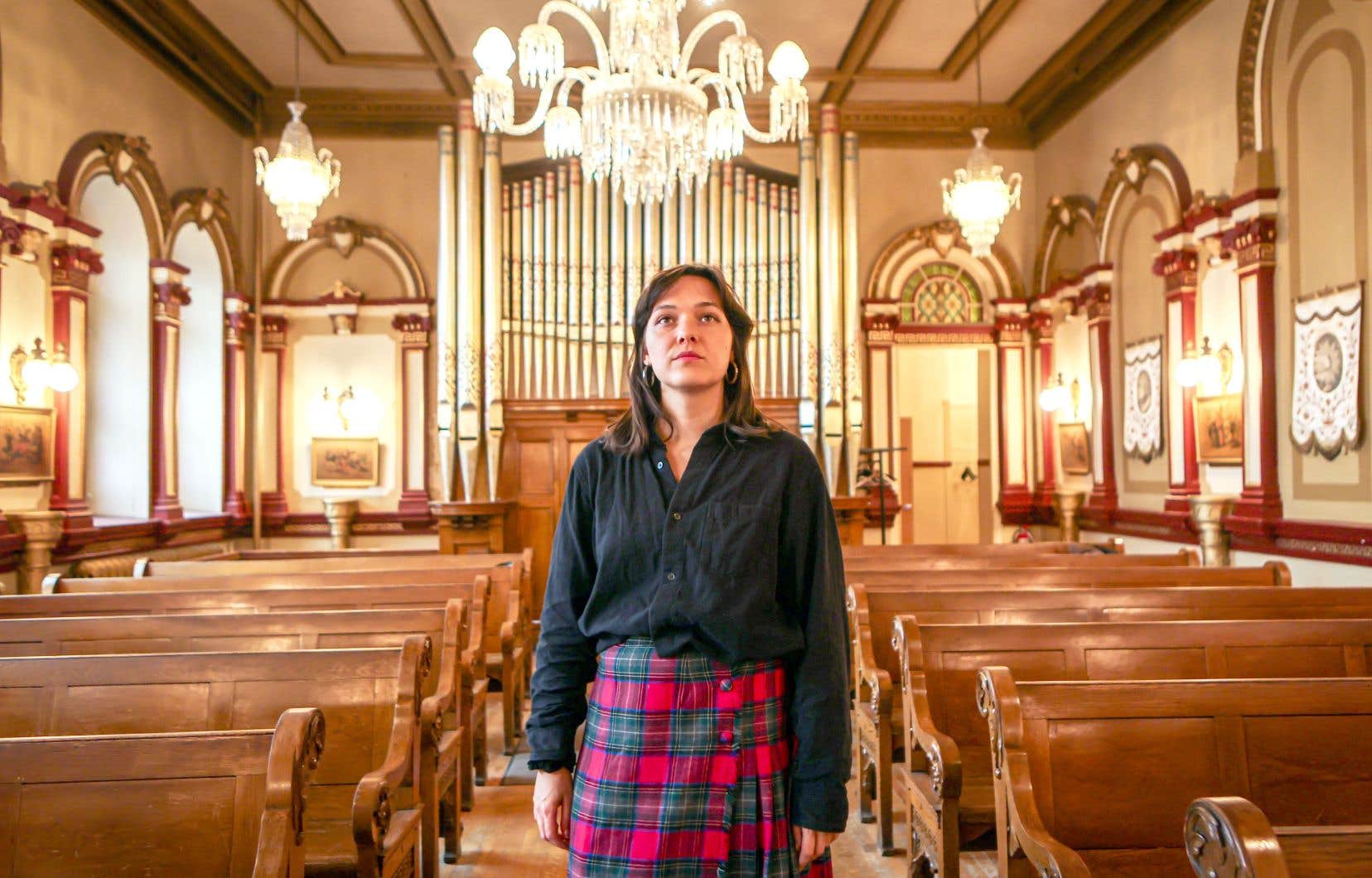Folk revelation of the season, Arielle Soucy recorded most of the songs from this captivating There’s nothing I’m not in a small trailer parked on his sister’s land, in the village of Brébeuf, probably surrounded by the deer that inhabit the Laurentian region. The voice, the guitars, “all alone, in one take. I wanted to convey this feeling on the album, this little charm do it yourself. This is also where I recorded my last EP, entitled Unresolved Collection and published independently in spring 2021. “I still hope that this is the last album that I will record there…”
The singer-songwriter arranged to meet us in the Saint-Louis chapel attached to the Saint-Jean-Baptiste church, rue Rachel, just west of Saint-Denis. It is accessed by a first cement staircase, then narrow wooden steps, into this tiny space that can accommodate around a hundred worshipers – or fans, since this is where the folk musician will launch her very first album, next October 30.
“I like it being here, I feel good,” she says, sitting on her varnished wooden bench. Arielle sang in church for a long time. Child first, classical singing student at Corcordia University then, but within the confines of Saint-Matthias Anglican Church in Westmount, where the choir rehearsed. Since there is no coincidence, let us immediately note the pastoral, rural character of this album to which the acoustic guitars, strings and choirs give warmth and light.
Her university training led her to dabble in jazz singing, but it was classical singing technique that attracted her, “because it is the ultimate in vocal technique. I especially love Renaissance songs, counterpoint,” a mode of musical composition that we recognize even in the form of Arielle Soucy’s songs.
“I want to build a bridge between classical music – or sacred music, rather, the very music that does me so much good – and the world of pop music. It annoys me that pop and classical are always separated, in their own chapel. And it also annoys me that to hear these Renaissance songs, you have to go to church,” explains Arielle who, on each song on the album, more traditionally folk (the title song) or downright country (like a squeaky violin ballad, on the very authentic Ottawa), always adds poignant vocal harmonies.
I want to build a bridge between classical music – or sacred music, rather, the very one that does me so much good – and the world of pop music
“Harmonies are my sweet spot, it’s what I love to do,” she says. I compose thinking about that, that’s how my brain works, so it’s natural to want to bring together [la musique ancienne] folk in my songs. The only instruction I had in mind when making this album was to purify the songs. To give them space to exist. It breathes, in the album, you can hear the little details. In general, I don’t like music that’s too busy, music loud. I like that you can hear all the melodies clearly. »
This first bilingual album, which appears after two EPs of folk songs in English, is a little gem. The music from the film of falling leaves, the music of the smell of the heater being turned on for the first time in the fall. Once the instrumental introduction (Post-death thoughts) past, this sometimes modal style of writing, these melodic phrases which loop, can be heard in the coda of Forgive me in the middle of the album, or even on the pretty Ride from the beginning, where Arielle sings, cutting up each syllable as if the text were tumbling down the small steps leading to the chapel.
“This one is an exercise,” explains Arielle, who these days is opening for Philippe B’s concerts on tour. “I had this melody in mind, I put words to it, little by little. I like the division of words here, we’re not used to hearing that. And in this song, there are lots of images; It’s not important to understand the meaning of what I mean. I’m aware that we lose bits of it because of the way I sing, but I find that it gives it something mysterious. »
Something that fits well with the themes of the album, which Arielle explains without revealing everything: “It’s very much an album about acceptance. It’s something I think about when I compose. I keep a diary, I dig through it to find parts of sentences, ideas, for my texts. I was interested in what I call non-censorship, or the absence of, in what can go through our heads. Things we think about but don’t say, for fear of being ashamed. I’m talking about taking on whatever comes into our heads and how those thoughts can be contradictory, because what we think about sometimes doesn’t necessarily define us. It’s getting rid of the stories we build in our heads. »
